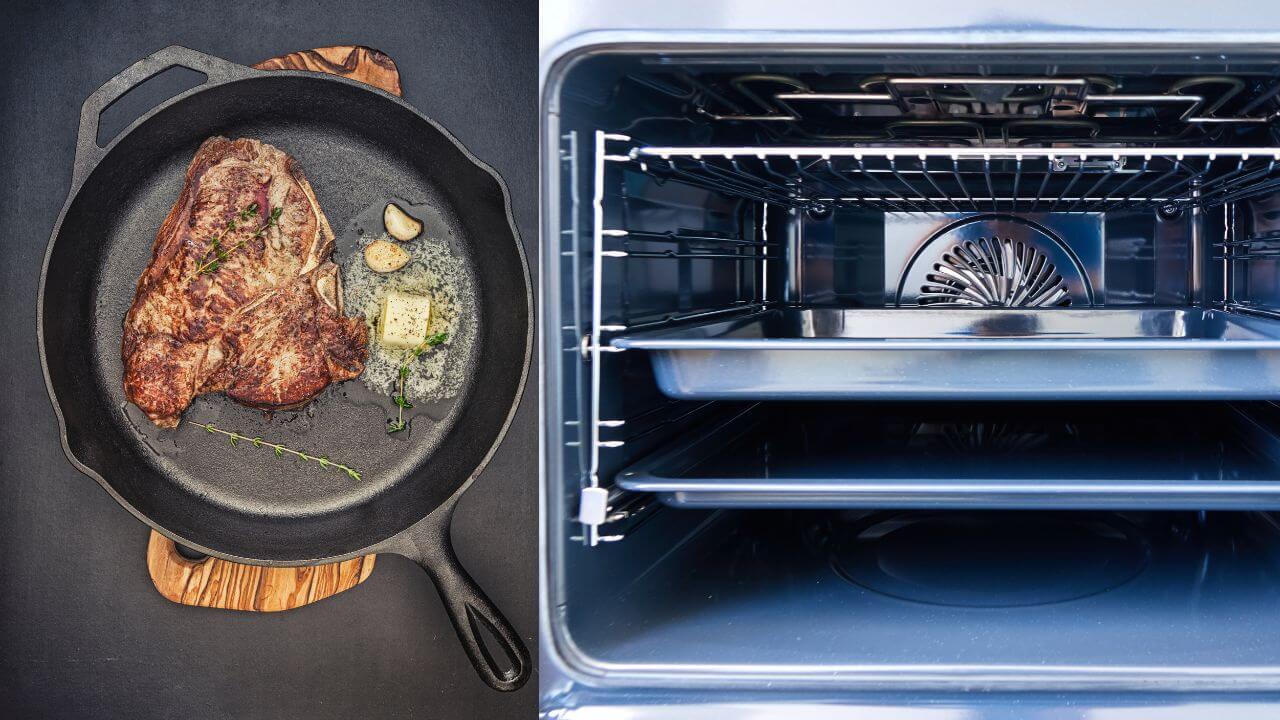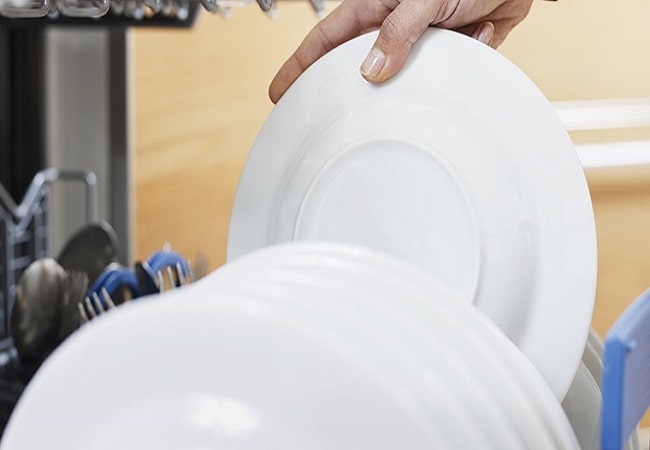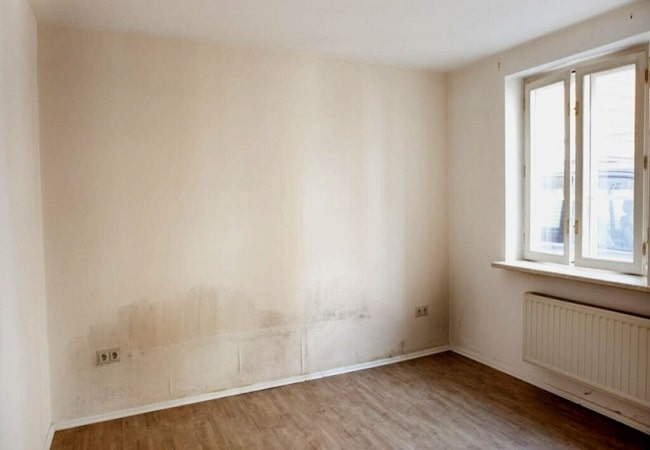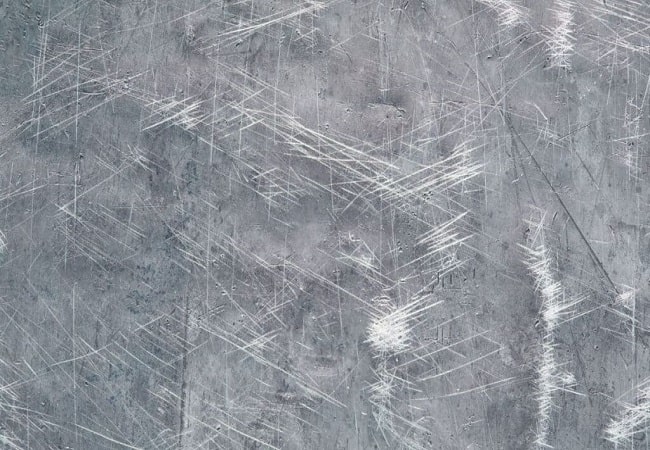Most people are familiar with cast iron cookware because it is often used for traditional cooking. Cast iron is made of iron that has been heated to extremely high temperatures, then shaped into a thin sheet. This sheet is then treated with a coating that makes it non-stick and resists rusting. This cookware is ideal for slow cooking or baking because the heat penetrates the food slowly and evenly. You can also use cast iron in a convection oven, but you must ensure that the cookware doesn’t get too hot. Too much heat can cause the cast iron to become brittle and crack, making it unusable.
Contents
- 1 Is cast iron safe to use in a convection oven?
- 2 What precautions should you take to use cast iron?
- 3 What is the advantage of using cast iron in a convection oven?
- 4 What is the disadvantage of using cast iron in a convection oven?
- 5 Which materials are good for a convection oven?
- 6 Frequently asked question
- 7 Conclusion
Is cast iron safe to use in a convection oven?
Cast iron cookware is a classic option for those who love to cook. This cookware is safe in a convection oven but doesn’t evenly distribute heat. Because of this, you may need to preheat the oven before putting cast-iron cookware in it. And be careful not to let the cookware get too hot-too much heat can cause it to fracture.
What precautions should you take to use cast iron?
Cast iron works well in convection ovens because it transfers heat quickly and evenly. This makes it a good choice for cooking foods that need high temperatures. However, there are a few precautions you should take when using cast iron in a convection oven:
- Make sure that the cast iron is seasoned properly. This means heating it in a dry and hot oven until it reaches its desired temperature. Then, let it cool down before using it.
- Another precaution to take while using cast iron in a convection oven is to ensure that the pan is evenly heated before adding the food item. This will prevent hotspots from forming, which can cause the cast iron to heat unevenly and potentially create sparks.
- Be careful not to overheat the pan, or you may damage it. Finally, always use caution when moving or handling the pan, as it may be hot.
- Cast iron should not be stored in the oven or stovetop, as it will react with those surfaces and become rusty. Instead, storing it in a cool, dry place would be best.
What is the advantage of using cast iron in a convection oven?
Cast iron is a very common material used in convection ovens. It is the most popular material. Cast iron offers some advantages that make it a better choice for some applications.
- The first advantage is that cast iron is even hotter than other materials used in convection ovens. This means your food will cook more evenly and quickly, giving better results.
- Cast iron also lasts longer than other materials, making it less likely to need replacement parts over time.
- Cast iron is rust-resistant, so you won’t have to worry about it rusting over time.
- Cast iron is a good material to use in a convection oven because it doesn’t absorb moisture, which can cause food to steam and not cook evenly.
What is the disadvantage of using cast iron in a convection oven?
There are a few disadvantages to using cast iron in a convection oven:
- Cast iron is not as heat resistant as other materials, so it will heat up more quickly and potentially create more heat damage.
- Cast iron is a well-seasoned material, and it can be difficult to clean the oven’s interior without damaging it.
- Cast iron also tends to be heavier than other materials used in convection ovens, so it may not be easy to move around when cooking.
- The disadvantage of using cast iron in a convection oven is that it produces more smoke and heat than other pans.
- Cast iron can’t cook food as evenly because of the uneven heat.
- Another disadvantage to using cast iron in a convection oven is that it can’t go in the oven at high temperatures as other pans can.
- Materials that are not good heat conductors, like glass and cast iron, cannot cook the food as rapidly and may leave cold spots.
Which materials are good for a convection oven?
Keeping your oven in top condition ensures that your food tastes great. One of the most important things you can do to ensure this is to keep your oven clean. Different materials work better for different ovens, so it’s important to know what’s best for you.
For instance, an oven made of aluminum is faster than one made of steel. Aluminum also conducts heat well, so foods cook quickly and evenly. It also doesn’t react with foods, meaning you can use it with various recipes.
They’re relatively easy to clean and won’t rust over time. However, they can get very hot, so be cautious when opening the door.
Another option is stainless steel panels. They’re also easy to clean but can be a bit more expensive than aluminum sheets. Also, stainless steel might not conduct heat as well as aluminum, so check the temperature before you cook something big.
Frequently asked question
Can you use cast iron in a convection oven with a non-stick coating?
Cast iron is a great material for a convection oven with a non-stick coating. Non-stick coatings protect the cast iron from sticking to the oven walls and make cleaning much easier.
If your cast iron doesn’t have a non-stick coating, you can still use it in a convection oven, but preheat it before adding the cast iron.
What kind of cookware can you use in a Convection Oven?
The answer is that you can use any cookware that is oven safe. Any aluminum, cast iron, stainless steel, or non-stick cookware used in a Convection Oven. Just ensure the oven is hot before you put your cookware in it, and follow the instructions on cleaning and seasoning it.
Can I use a cast iron skillet in a convection oven?
Yes, cast iron skillets are used in a convection oven. The main reason is that they heat evenly and have a great non-stick surface. Also, cast iron skillets are sturdy and won’t bend or warp in the oven.
Can cast iron be used in a convection microwave oven?
Cast iron is a common material used in ovens. It has been found that cast iron is used in convection microwaves, but you must take some precautions. Cast iron heats up quickly and can cause the oven to overheat. Additionally, the metal may create sparks that could start a fire.
Conclusion
You can use cast iron in a convection oven without risk if the pan is properly seasoned and oiled. You must read the manufacturer’s instructions and follow them, though, as misuse could lead to an unsafe oven. Lastly, keep in mind that if you use a cast iron skillet or oven for cooking your food, you should always keep an eye on it. If not used correctly, this traditional kitchen tool can quickly become dangerous.





Leave a Reply